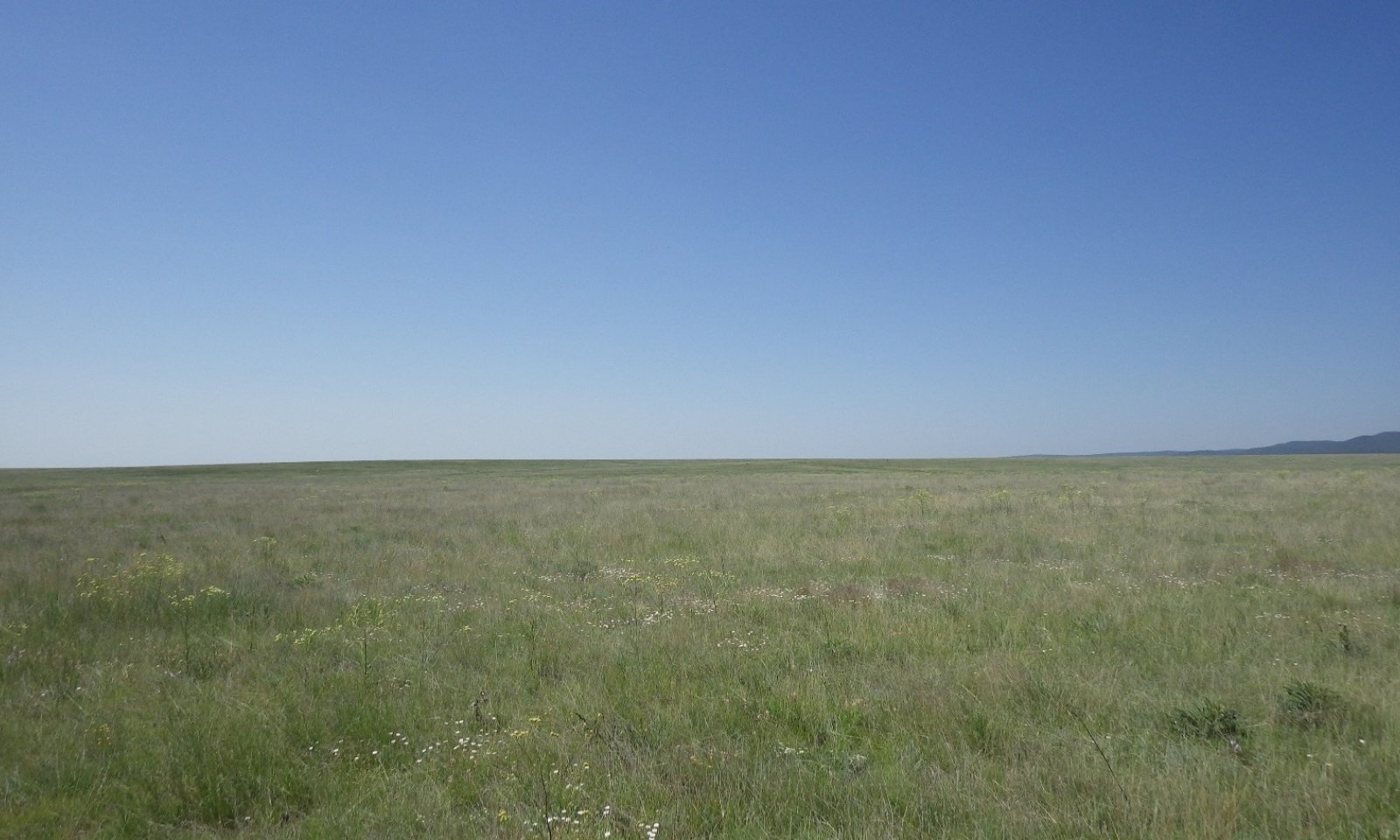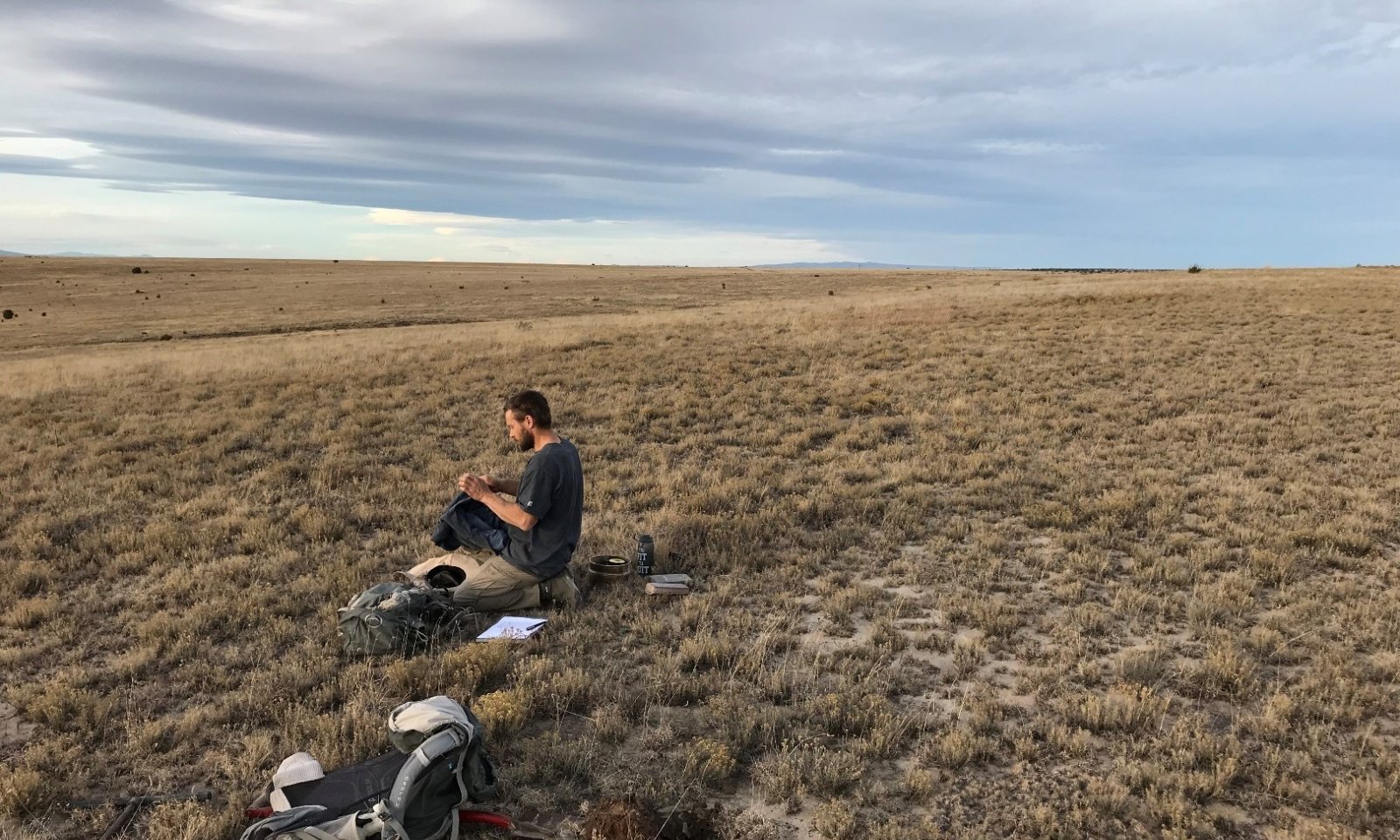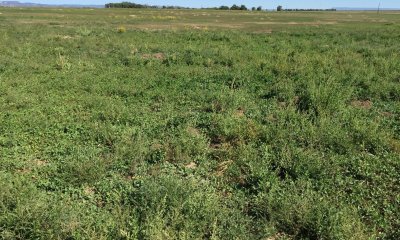
Clayey Uplands
Scenario model
Current ecosystem state
Select a state
Management practices/drivers
Select a transition or restoration pathway
-
Transition T1A
Prolonged Period of Stress on Ecosystem
More details -
Transition T1B
T1B Plowing and Soil Disturbance: The mechanical disturbance of the soil surface.
More details -
Restoration pathway R2A
Grassland Restoration
More details -
Transition T2A
Mechanical Disturbance of Soil Surface Through Plowing or Vehicle Traffic.
More details -
Restoration pathway R3A
Restoration of Shortgrass Prairie Ecosystem
More details -
Restoration pathway R3B
Restoration of Shortgrass Prairie Ecosystem
More details -
No transition or restoration pathway between the selected states has been described
Target ecosystem state
Select a state
State 1
Reference State





Description
This state represents the most ecologically stable state in terms of resistance to erosion. Moreover, this state has the highest potential for productivity and plant diversity.
Submodel
State 2
Degraded State




Submodel
Mechanism
Slow variables: Continued encroachment by shrubs, coupled with the loss of herbaceous plant production, leads to decreases in total canopy cover and exposure to erosion events which will reduce topsoil and its high soil organic matter content. The result is an increase in the rate of wind and water erosion—leading to the loss of topsoil and an associated decrease in available water and nutrients.
Trigger event: History of fire management, removal of large predators, and heavy grazing set the stage for transition mechanism. This might be in the form of a severe drought which can weaken or kill perennial grasses, resulting in a loss in canopy cover. Threshold: The vigor and cover of perennial grasses is reduced to a point at which perennial grasses die and soil surfaces become highly susceptible to erosion.
Constraints to recovery
Moisture, flexibility in the grazing program, as well as potential to implement fire management can all have an impact in ability for recovery.
Context dependence
Seasonal and annual patterns of moisture delivery with regards to the rate and amounts of precipitation. Prolonged dry periods, especially during the growing season, can prevent recovery or encourage the transition. When coupled with continued, undisciplined grazing program, transition will be enhanced.
Mechanism
Trigger event(s): Mechanical soil surface disturbance, such as plowing activities or vehicle traffic causes the disruption of soil structure at the surface and kills perennial plants. The structure disturbance has an immediate effect of decomposing humus thereby diminishing the soil organic matter content that may have taken decades or centuries to develop. The soil surface is 100% bare ground for a period of time where its exposure can make it susceptible to wind and water erosion. Each successive disturbance event further diminishes these soil surface properties and may cause a dense plow layer to form in the subsurface which prevents air and water from entering the soil, thereby reducing its ability to support plant life and furthering its vulnerability to erosion.
Slow variables: Once crop planting ceases, pioneer species (mostly annual forbs) establish and their abundance gradually increases.
Threshold: After repeated cycles and/or the applications of herbicides, the native seedbank is exhausted.
Constraints to recovery
Loss of topsoil (usually entire "A" horizon) such that soil properties are severely degraded. This includes:
1. loss of organic matter which is important for processes such as nutrient cycling, moisture infiltration and retention, decreased bulk density;
2. impaired soil hydrology where coarser surface textures had allowed better infiltration of precipitation. This moisture would then become retained at the boundary to a higher-clay subsurface horizon therefore providing better soil moisture storage for shallow rooting plants such as grasses.
3. exposure of existing plant roots to the atmosphere where desiccation can weaken and cause mortality in perennial grasses.
Context dependence
Seasonal and annual patterns of moisture delivery with regards to the rate and amounts of precipitation can greatly affect the severity of soil degradation following periods of plowing. Soil disturbance during prolonged dry periods, especially during the growing season, will encourage this transition. When coupled with a continued, undisciplined grazing program, transition will be enhanced.
Mechanism
Restoration is dependent on techniques that focus on increased plant canopy cover from perennial grasses, increased species biodiversity, shrub control, and managed grazing. The goal is to focus on an increase in the competitive advantage of various perennial grass species through physical, chemical, and biological management practices. This restoration pathway will likely require long-term, multifaceted approaches and may require some high-energy inputs.
In order to return to State 1:
1. erosion needs to be halted, this may be directly tied to increases in plant canopy
2. grazing is managed to optimize perennial grass recovery and increase plant canopy (may be requirement to initiate the recovery)
3. some re-introduction of extirpated plant species may be required
4. period favorable weather patterns may be necessary to initiate recovery
5. time
Context dependence
Seasonal and annual patterns of moisture delivery with regards to the rate and amounts of precipitation are critical to the success of any restoration program. Flexibility in timing needs to be built into the restoration strategy. Prolonged dry periods, especially during the growing season, can prevent recovery of plant species and set the stage for failure.
Flexibility in livestock grazing program is needed to allow plant community to recover without added animal stressors.
Mechanism
Trigger event(s): Mechanical soil surface disturbance, such as plowing activities or vehicle traffic causes the disruption of soil structure at the surface and kills perennial plants. The structure disturbance has an immediate effect of decomposing humus thereby diminishing the soil organic matter content that may have taken decades or centuries to develop. The soil surface is 100% bare ground for a period of time where its exposure can make it susceptible to wind and water erosion. Each successive disturbance event further diminishes these soil surface properties and may cause a dense plow layer to form in the subsurface which prevents air and water from entering the soil, thereby reducing its ability to support plant life and furthering its vulnerability to erosion.
Slow variables: Once crop planting ceases, pioneer species (mostly annual forbs) establish and their abundance gradually increases.
Threshold: After repeated cycles and/or the applications of herbicides, the native seedbank is exhausted.
Constraints to recovery
Loss of topsoil (usually entire "A" horizon) such that soil properties are severely degraded. This includes:
1. loss of organic matter which is important for processes such as nutrient cycling, moisture infiltration and retention, decreased bulk density;
2. impaired soil hydrology where coarser surface textures had allowed better infiltration of precipitation. This moisture would then become retained at the boundary to a higher-clay subsurface horizon therefore providing better soil moisture storage for shallow rooting plants such as grasses.
3. exposure of existing plant roots to the atmosphere where desiccation can weaken and cause mortality in perennial grasses.
Context dependence
Seasonal and annual patterns of moisture delivery with regards to the rate and amounts of precipitation can greatly affect the severity of soil degradation following periods of plowing. Soil disturbance during prolonged dry periods, especially during the growing season, will encourage this transition. When coupled with a continued, undisciplined grazing program, transition will be enhanced.
Mechanism
The native plant community is re-established
Context dependence
Restoration activities will require a large investment in resources to revert a former cropland back into a functioning shortgrass prairie. The restoration will need to be tailored to the specific needs of a particular field or pasture and the expectations for the desired outcome. The possible list of restoration activities includes:
1. reseeding - applying a desired seedbank to recover plant biodiversity
2. irrigation - ensuring the success of seeding activities, without which a low probability of recovery is expected.
3. return of topsoil material - it is possible that any recovery in the ecosystem will be hindered without some return of topsoil properties, which will include organic matter and may also require application a coarser textured medium to improve soil hydrology.
4. Maintenance of the recovery process - multiple attempts at seeding may be necessary as not all species will see success per any application. Weed-control practices will also be necessary.
5. favorable weather patterns
6. time
Mechanism
Restoring native grasslands.
Context dependence
Restoration activities will require a large investment in resources to revert a former cropland back into a functioning shortgrass prairie. The restoration will need to be tailored to the specific needs of a particular field or pasture and the expectations for the desired outcome. The possible list of restoration activities includes:
1. reseeding - applying a desired seedbank to recover plant biodiversity
2. irrigation - ensuring the success of seeding activities, without which a low probability of recovery is expected.
3. return of topsoil material - it is possible that any recovery in the ecosystem will be hindered without some return of topsoil properties, which will include organic matter and may also require application a coarser textured medium to improve soil hydrology.
4. Maintenance of the recovery process - multiple attempts at seeding may be necessary as not all species will see success per any application. Weed-control practices will also be necessary.
5. favorable weather patterns
6. time
Model keys
Briefcase
Add ecological sites and Major Land Resource Areas to your briefcase by clicking on the briefcase (![]() ) icon wherever it occurs. Drag and drop items to reorder. Cookies are used to store briefcase items between browsing sessions. Because of this, the number of items that can be added to your briefcase is limited, and briefcase items added on one device and browser cannot be accessed from another device or browser. Users who do not wish to place cookies on their devices should not use the briefcase tool. Briefcase cookies serve no other purpose than described here and are deleted whenever browsing history is cleared.
) icon wherever it occurs. Drag and drop items to reorder. Cookies are used to store briefcase items between browsing sessions. Because of this, the number of items that can be added to your briefcase is limited, and briefcase items added on one device and browser cannot be accessed from another device or browser. Users who do not wish to place cookies on their devices should not use the briefcase tool. Briefcase cookies serve no other purpose than described here and are deleted whenever browsing history is cleared.
Ecological sites
Major Land Resource Areas
The Ecosystem Dynamics Interpretive Tool is an information system framework developed by the USDA-ARS Jornada Experimental Range, USDA Natural Resources Conservation Service, and New Mexico State University.



